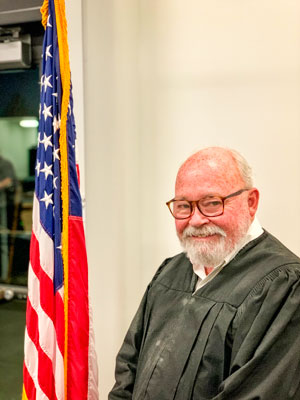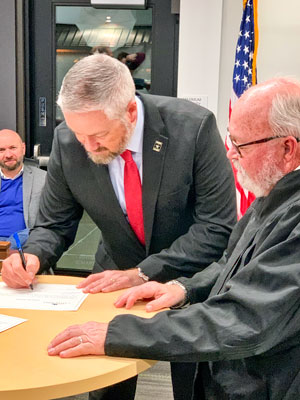Judge Gresh on city court, past and present
By Steve Whitlock; photos by Terri Wiebold

The City of Castle Pines is more than 10 years old, and so is the relationship with the City’s municipal judge since its founding, Judge Louis Gresh.
When Gresh launched the Castle Pines Municipal Court in 2010, there was no computer system. As a result, shoe boxes were first used to file documents, including infractions and parking tickets. Gresh calls those the “horse and buggy” days. Today, the court is noticeably different, with recent examples including significant software and database upgrades. Ticket data is now electronically downloadable, which ensures accuracy and efficiency. Defendants are not only able to pay online, but they are also able to request plea bargains and receive emailed receipts. The goal according to Gresh is to keep it simple and correct.
“We use a system of leniency, which basically states that first offenders pay the least possible price based on the fine schedule that we have,” said Gresh. “For repeat offenders, we use economic deprivation … we almost never use jail.”
Gresh stated his personal objective as providing reliable, comprehensive judicial services at a reasonable cost to the municipality. He has been a judge in Colorado for more than 33 years and a state court magistrate for 23 of those years. In the municipal court arena, he has been successfully appealed only one time.
Reflecting on his career, Gresh attributes his care for people as the contributing factor for his longevity and success as a judge. His love for law is closely related to his interest in people. He has gained particular satisfaction by helping young people back onto the right track.

City of Castle Pines District 2 Councilmember Kevin Rants signs his oath of office, which was administered by Judge Louis Gresh.
When asked about his approach as a judge, he stated, “I listen to the facts and apply the law. In law school, this method is called IRAC, which stands for, issue, rule, analysis, and conclusion.” This structure for organizing and presenting facts is commonly used in law as it provides an effective argument by presenting pertinent information, rules and the framework for a strong argument. When these elements are provided, the logical conclusion should be both persuasive and evident.
Regarding legacy, Gresh wants to be known for how he cared about his community by helping make it a better place.